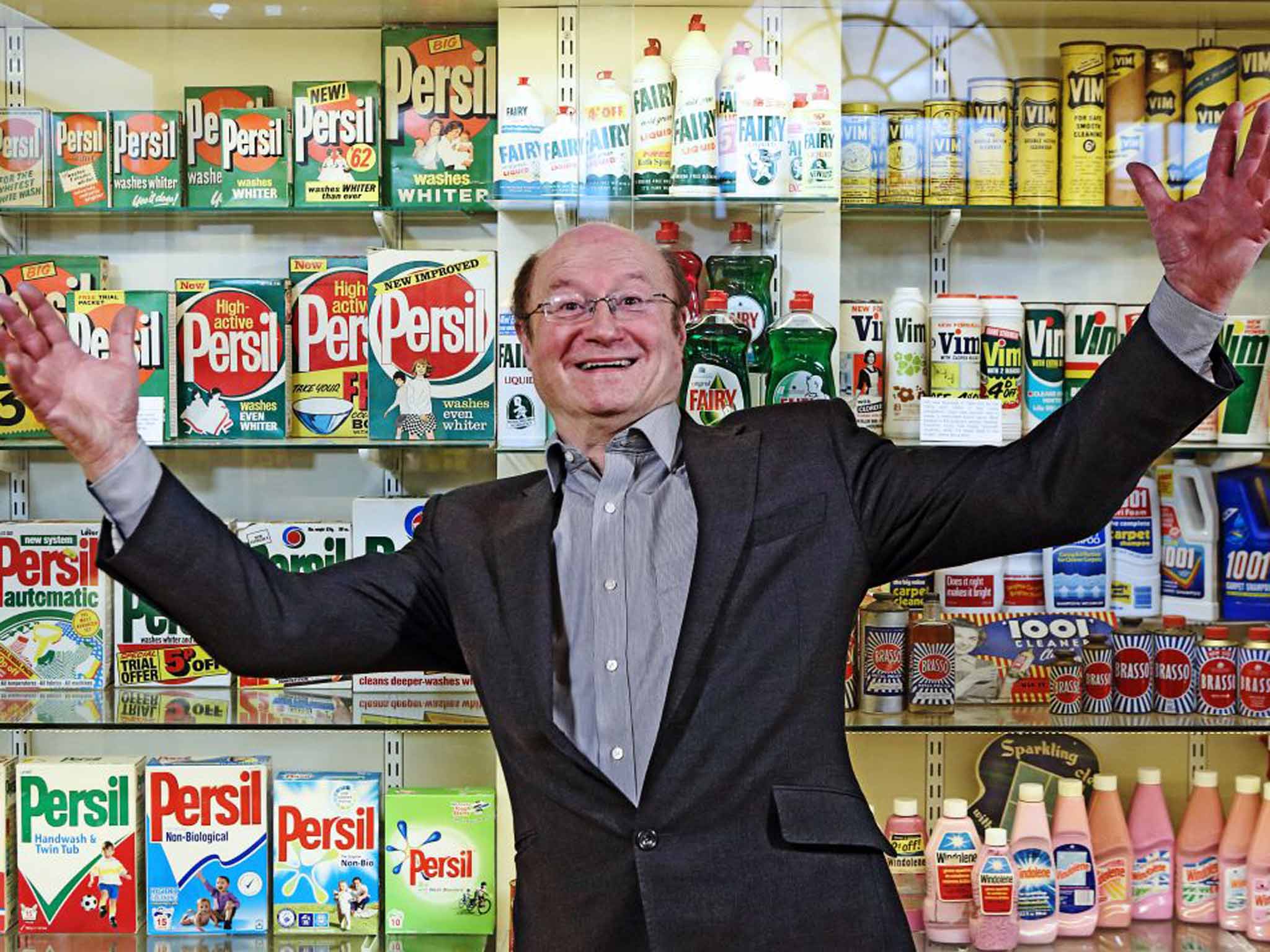Packaging of consumer goods is about more than branding: 'Never underestimate the power of nostalgia'
Packing tells the story of who we are, says 'supermarket archaeologist' Robert Opie

It takes perhaps a prescient – one might say, unusual – person to wander down an aisle in Tesco convinced they are surrounded by products worthy of permanent commemoration, but that person would find much to enjoy in the Museum of Brands.
Based in London and founded in 2005 by Robert Opie – “a consumer historian or a supermarket archaeologist”, as he is referred to on the museum's website – it is a celebration of the ordinary and the humdrum, a collection of consumer products from the Victorian times to the present day.
Where the average museum is lined with relics from, say, the Mesozoic era, or else replete with Van Goghs and Turners, Opie's is littered with more than 14,000 examples of historical brands: vintage Oxo boxes, packets of Tide, tins of Bird's custard powder. It's a little like taking a peek inside Grandma's forgotten kitchen cupboards, had Grandma been a hoarder.
“I've been collecting all sorts of things for the past 50 years now,” says Opie, 68, author of more than 20 books on the subject. “Long ago it struck me that no one else had done anything like this, that there is no record of how all this came about and how it transformed our lives, and so I undertook it myself. It's a vast subject.”
So vast that it has proved his life's work. His first exhibition took place 40 years ago at the V&A in London, entitled “The Pack Age”. Emboldened by its success, he began to collect more and more stuff – he says he prefers to be called “passionate” over “obsessive” – and in 1984 he opened his first museum in Gloucester before transferring to the capital.
Now about to reopen in larger premises just off Portobello Road in west London – itself regarded as a magnet for everyday tat masquerading as the significant – this is a museum that prompts a heady sense of recognition. Everything here is familiar, and all of it, Opie insists, has an intriguing story to tell.
“Not everybody realises that Twiglets, for example, first arrived into our lives in the 1930s,” he says. “And did you know that KitKat did not launch as KitKat originally, but as something far more mundane? It was called Chocolate Crisp, and it was only later that Rowntrees realised they could perhaps brand this into something more appealing-sounding.”
They initially missed a similar trick with Smarties, he says. “They were called Chocolate Beans at first, which is fairly descriptive but far from exciting.” One might be so bold as to respond: who cares? But Opie argues that the consumer products we purchase throughout life – from toys to newspapers, technology to fashion – makes us who we are, and so, he suggests, tells us the story of us. And what is more significant than that?
“Traditionally, we have looked down on such things because they are part of trade and industry, the commercial world, but it's far more important than that,” he says. “[The poet] John Betjeman said that once you understand the confusion of the past, the confusion of the present becomes clearer.”
Just add nostalgia: The foods that made Britain great
Show all 6The museum also helps us to understand the confusion of today, paying as it does as much respect to current products as to those of eras gone by. Opie has spent the past few years – at considerable personal cost – collecting myriad One Direction, Minions and Frozen paraphernalia to add to the collection.
“The 1D merchandising is a phenomenon, the biggest branding opportunity since the Beatles,” he says, in reference to the boy band's image on everything from T-shirts to make-up to deodorant. Many people might find such opportunistic branding crass and nauseating, but children probably don't. In years to come, Opie predicts, they will view a congealed tube of body lotion embossed with Harry Styles's smirking face much the way older generations might a 70-year-old Twinings Tea box.
“It's nostalgia,” he says. “Never underestimate the power of nostalgia.”
Subscribe to Independent Premium to bookmark this article
Want to bookmark your favourite articles and stories to read or reference later? Start your Independent Premium subscription today.

Join our commenting forum
Join thought-provoking conversations, follow other Independent readers and see their replies